Introduction
Dealing with plantar fasciitis can be a real pain—literally. This common foot condition can make every step you take a struggle. As an experienced bodywork therapist, I’ve helped many clients find relief from this persistent problem through various bodywork techniques. Whether you’re a runner, a teacher who stands all day, or simply someone struggling with this condition, understanding how bodywork therapy can help might be your ticket to pain-free feet.
What is Plantar Fasciitis?
Plantar fasciitis is a common foot problem causing pain in your heel and the bottom of your foot. It happens when the plantar fascia, a thick band of tissue that supports your foot’s arch, gets inflamed or damaged. This pain is often sharp and most noticeable with your first steps in the morning.
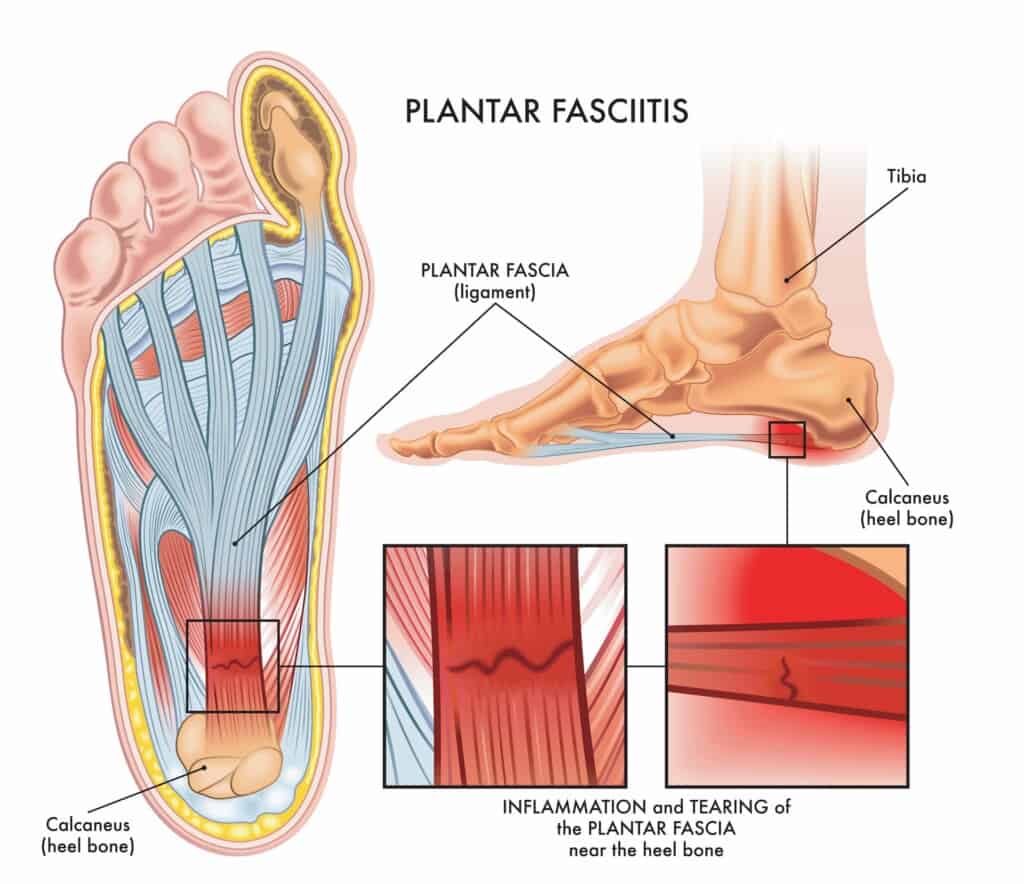
Think of the plantar fascia as a strong rubber band that stretches along the bottom of your foot. When it’s overused or overstretched, tiny tears can form, leading to pain and inflammation. This condition is common in runners and people who spend a lot of time on their feet, but it can affect anyone.
Symptoms and Sensations of Plantar Fasciitis
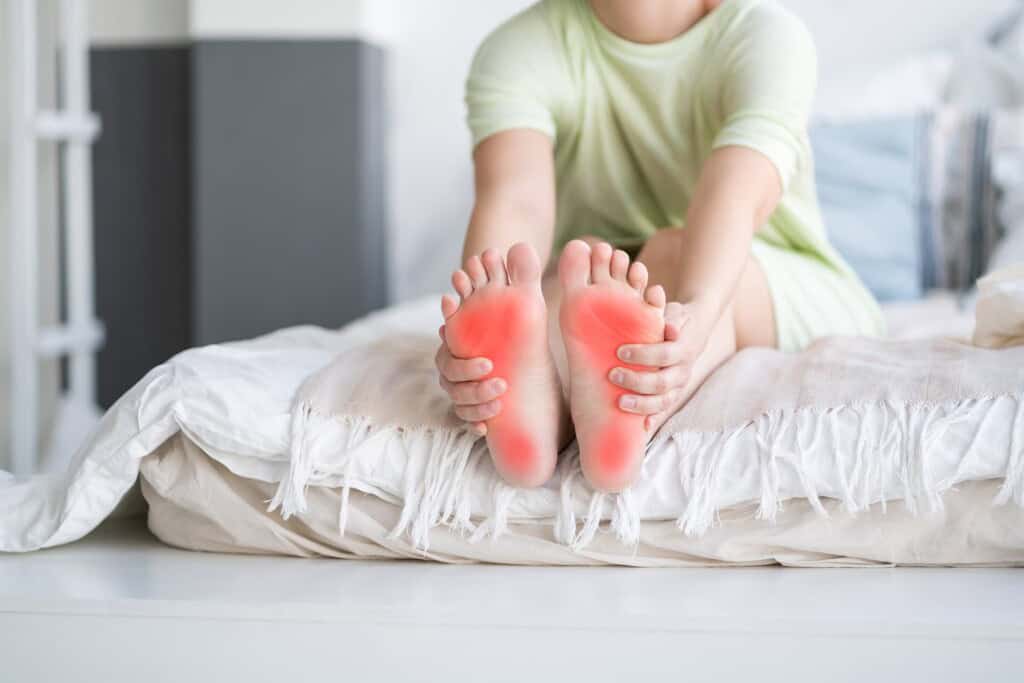
The most common symptom of plantar fasciitis is a stabbing pain near the heel, especially noticeable with your first steps in the morning. This pain can decrease throughout the day but may return after long periods of standing or when you stand up after sitting. Many describe it as feeling like stepping on a nail, while others describe it as a dull ache that worsens with activity.
Causes and Risk Factors

Several factors can contribute to the development of plantar fasciitis:
- Overuse: Activities that put a lot of stress on your feet, like running or standing for long periods, can cause overuse injuries.
- Foot Structure: Flat feet, high arches, or abnormal walking patterns can put added stress on the plantar fascia.
- Age: Plantar fasciitis is most common in people between 40 and 60 years old.
- Weight: Extra body weight puts additional pressure on your feet.
- Occupation: Jobs that require long periods of standing or walking on hard surfaces can increase the risk.
How is Plantar Fasciitis Diagnosed?

A diagnosis is usually made based on your medical history and a physical exam. Your doctor will check for areas of tenderness on your foot and may ask you to flex your foot to pinpoint the pain. In some cases, imaging tests like X-rays or MRIs may be used to rule out other conditions.
Conventional Treatments
Treating plantar fasciitis typically involves a combination of rest, stretching exercises, and over-the-counter pain relievers. In more severe cases, physical therapy, orthotics, or even corticosteroid injections might be necessary. However, before jumping to more invasive treatments, bodywork therapy offers a natural and effective way to manage and heal this condition.
Bodywork Therapy for Plantar Fasciitis
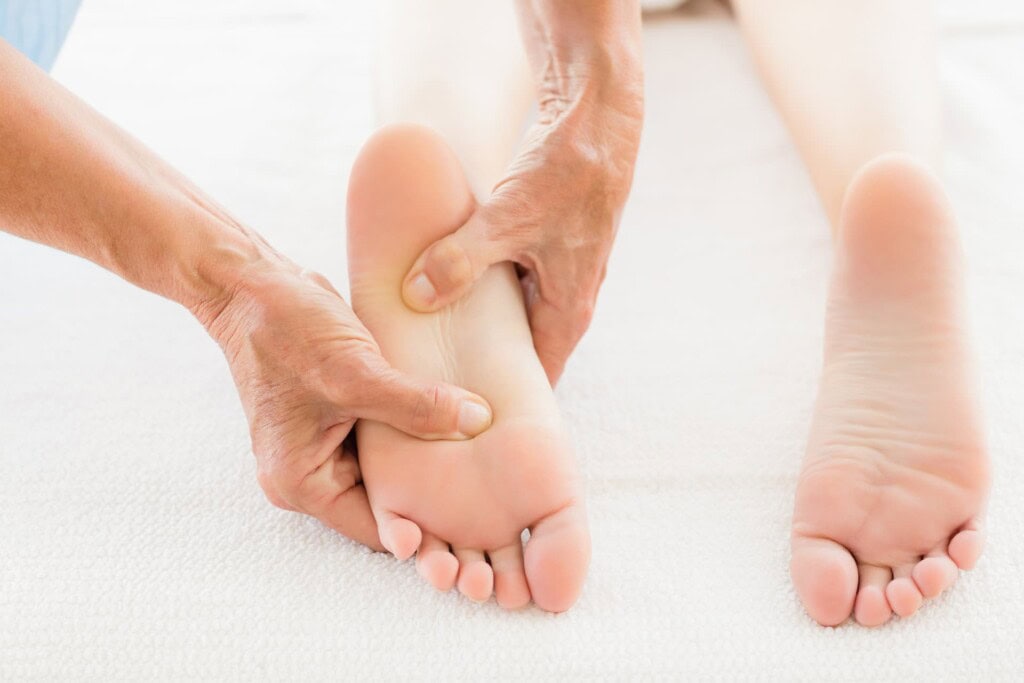
How It Helps
Bodywork therapy helps reduce pain and improve function by working on the muscles, fascia, and soft tissues affected by plantar fasciitis. Customized techniques aim to stretch the plantar fascia, promoting healing and reducing inflammation.
By improving blood flow, relaxing muscles, and reducing inflammation, bodywork therapy helps your feet heal naturally. It also restores flexibility and movement in your ankles and feet, so you can get back on your feet pain-free and ready to tackle your day.
Benefits
Bodywork therapy offers numerous benefits for those suffering from plantar fasciitis:
- Pain Relief: Reduces inflammation and alleviates pain by improving blood flow and relaxing tight muscles.
- Improved Mobility: Helps restore flexibility and range of motion in the foot and ankle.
- Enhanced Healing: Promotes natural healing processes by increasing circulation and reducing muscle tension.
Avoiding Surgery
One of the significant advantages of bodywork therapy is its potential to prevent the need for surgery. By addressing the root causes of plantar fasciitis, such as tight muscles and fascia, bodywork therapy can help alleviate symptoms and promote healing without invasive procedures. Regular sessions can keep the condition from worsening, reducing the likelihood of surgery.
Types of Bodywork Therapies
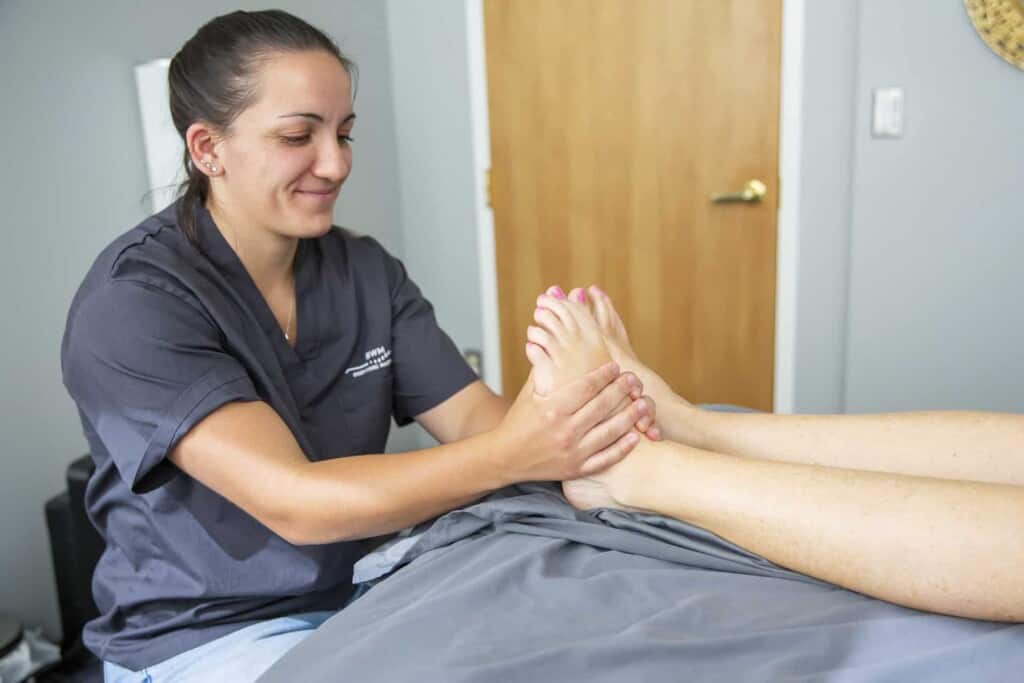
Different massage techniques can be particularly beneficial for plantar fasciitis:
- Deep Tissue Massage: Targets deeper layers of muscles and fascia, breaking up scar tissue and helping your foot feel looser and more comfortable.
- Myofascial Release: Imagine giving your foot a good stretch from the inside. It loosens the tight covering around your muscles, making your foot more flexible and less painful.
- Trigger Point Therapy: Focuses on finding and working out those specific spots in your foot that hurt when pressed. This can really help with heel pain.
- Sports Massage: Combines different foot-friendly techniques. Great for improving flexibility and reducing pain, especially if you’re active.
- Reflexology: More than just a foot rub – it works on special points in your foot connected to other body parts. It helps your whole body relax, which may ease foot pain too.
- Gua Sha (Graston) Technique: Uses special tools to find and smooth out rough spots in your foot tissue. It’s like ironing out wrinkles in your foot to help it function better.
- Cupping Therapy: Applies suction cups to your skin to boost blood flow. Increased circulation can mean less pain and faster healing for your sore foot.
- Craniosacral Therapy: A gentle technique working on your body’s overall balance. While not directly targeting your foot, it can help your body manage pain better overall.
Remember, these techniques aim to get your foot feeling better and moving more easily, without needing surgery or medication. They’re all about helping you get back on your feet – literally!
Self-Massage Techniques
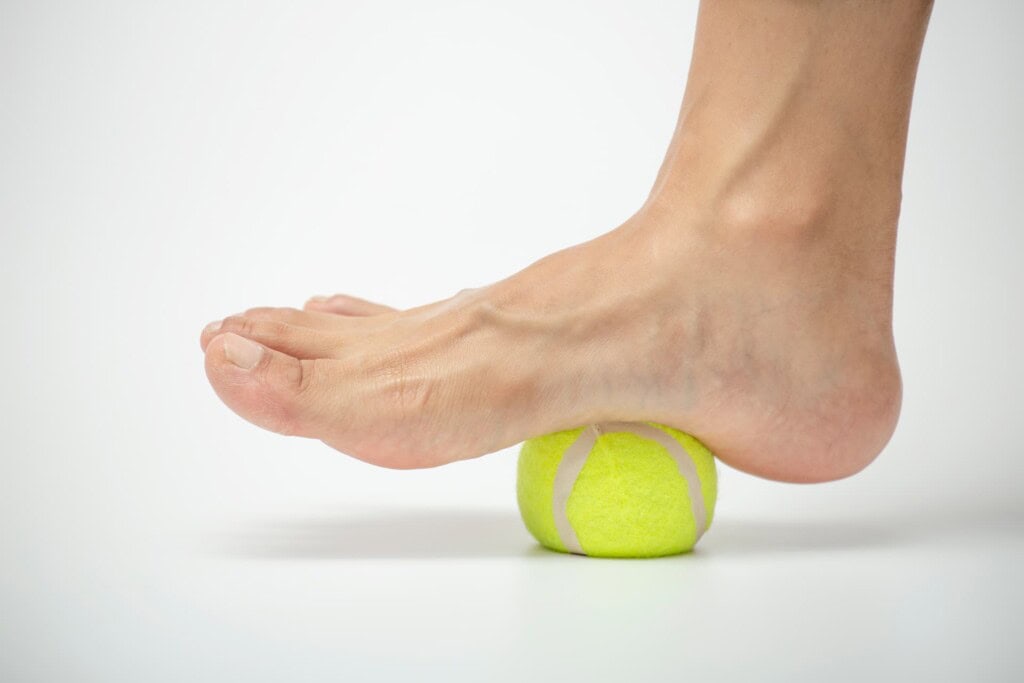
Yes, self-massage can be incredibly effective in managing plantar fasciitis pain. Here are some techniques you can try at home:
- Rolling with a Tennis Ball: Place a tennis ball under your foot and roll it back and forth, applying gentle pressure.
- Using a Massage Stick: A massage stick or rolling pin can be used to apply pressure along the arch of your foot.
- Manual Pressure: Use your thumbs to apply pressure to the arch and heel, holding for several seconds before releasing.
- Frozen Water Bottle Roll: It is important to apply heat to the bottom of your foot with a heating pad for 15 minutes first. Then, roll a frozen water bottle under your foot for 10 minutes. This combines massage with hot and cold therapy.
- Toe Stretching: Stretch your toes and the arch of your foot by gently pulling back on your toes.
These techniques can help reduce tension in the plantar fascia and improve blood flow, promoting healing.
Prevention
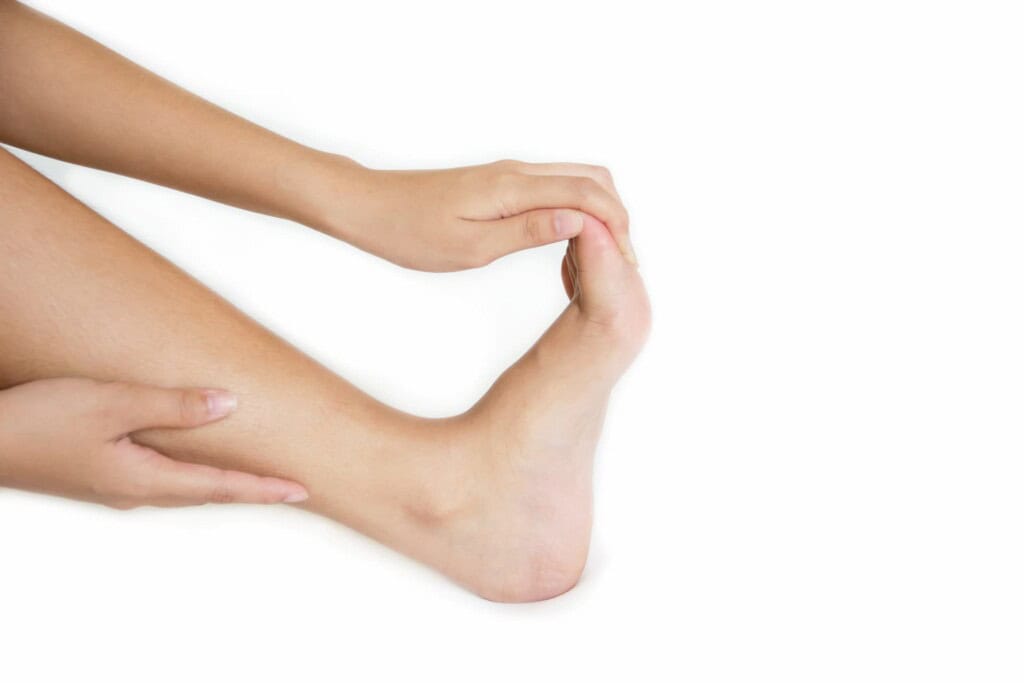
Preventing plantar fasciitis involves taking proactive steps to reduce stress on your feet:
- Wear Supportive Footwear: Choose shoes with good arch support and cushioning.
- Stretch Regularly: Incorporate stretching exercises for your calves and feet into your daily routine.
- Maintain a Healthy Weight: Reducing excess weight can alleviate pressure on your feet.
- Avoid Prolonged Standing: Take breaks and shift your weight frequently if your job requires standing for long periods.
Duration and Recovery
The duration of plantar fasciitis varies from person to person. With proper treatment, most people experience significant improvement within a few months. However, if left untreated, the condition can become chronic and last for years. Consistent bodywork therapy and self-care can accelerate the healing process and prevent recurrence.
Conclusion

Dealing with plantar fasciitis can be challenging, but bodywork therapy offers effective relief. Techniques like deep tissue massage, myofascial release, and trigger point therapy alleviate pain, improve mobility, and support natural healing processes.
Your feet carry you through every step of life. If you’re struggling with plantar fasciitis, don’t hesitate to take action. Contact Bodywork Masters today to explore how our specialized therapies can help you regain comfort and mobility in your feet. Your journey to pain-free living starts with a simple step – reach out to us and let us guide you towards relief.
